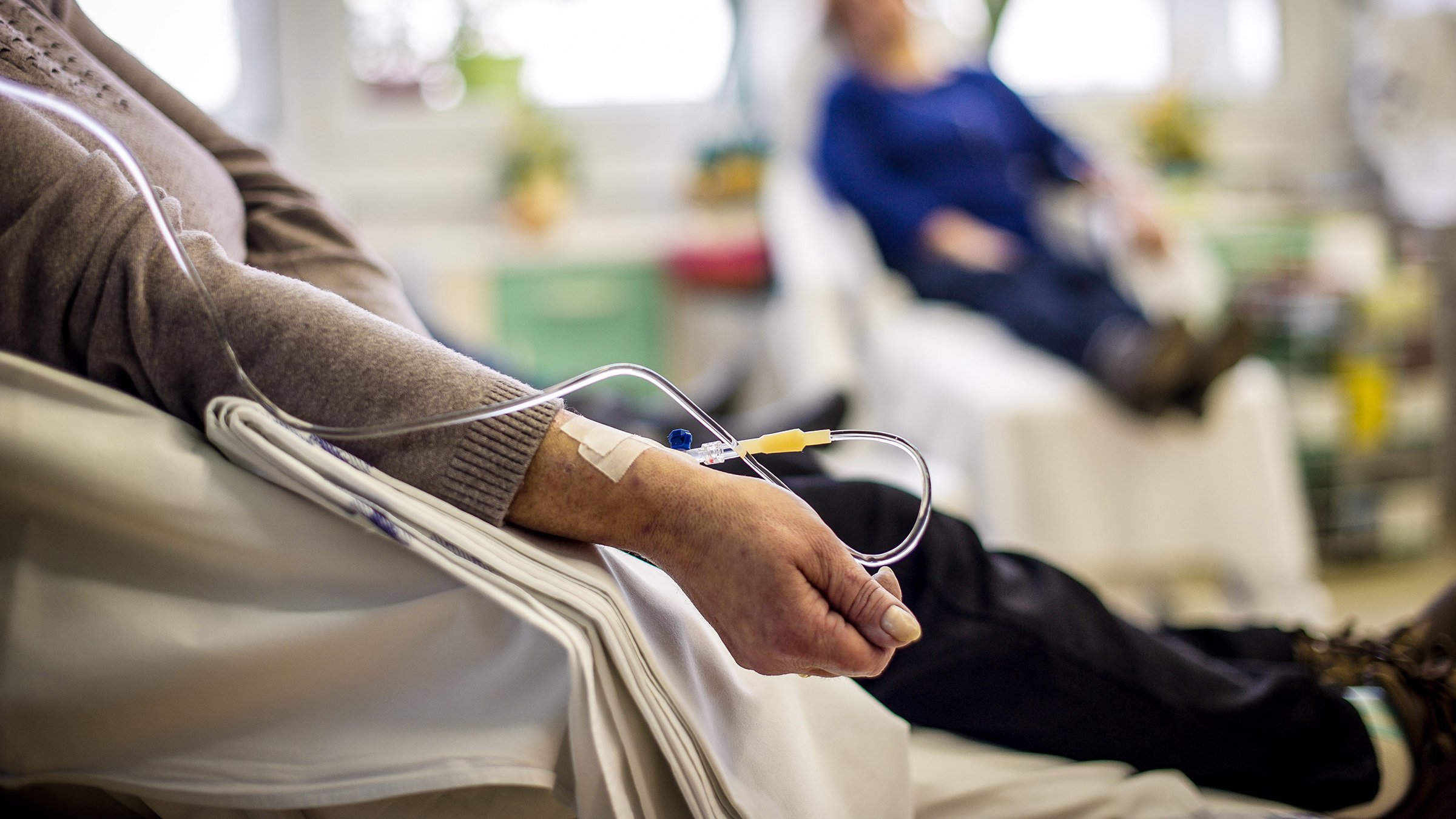Challenge
Excessive patient wait time - time in clinic averaged five hours per visit
Solutions
Software-simulated, specific process changes to help staff accurately analyze and assess opportunities for greatest process improvements prior to implementation
Results
- 25 percent decrease in total time in clinic
- Estimated 15,000 hours of patient time saved per year
Background - A Noble Cause
One in two men and one in three women will develop cancer in their lifetime. There are many organizations on the frontlines of this battle, hoping to improve that statistic. One battlefront is the long and complex process to move safe and eff ective cancer drugs to market.
A leading cancer institute brings clinical trials to patients through a network of strategic sites across the U.S. and UK. They take on the vital role of providing access to the latest therapies, including Phase 1 trials, for patients facing the disease in the comfort of their communities.
Challenge - The Best Problem
Recent breakthroughs in cancer research led to remarkable patient accruals for the drug development unit in Nashville, Tennessee. The clinic was seeing up to 70 patients in a given day, a signifi cant increase from the average 30 patients per day in previous years. This led to longer wait times and crowded waiting areas. Patients enrolled on trials were averaging fi ve hours each visit.
“The time patients spent in the clinic could be spent at home with their family and friends, enjoying life,” said Mary, manager of process improvement for the clinic. “We were seeking a solution to address this increased patient population to ensure that each individual was getting the best care possible as effi ciently as possible.”
Data is imperative for the success of a clinical trial. In Phase I clinical trials, for instance, patients have their blood drawn 12 times during the fi rst day they are treated to ensure that safety is closely monitored. The protocol for each study is diff erent, requiring diff erent steps and safety precautions. The problem, however, was that each step requires a varied amount of time. While the steps had been thoroughly documented, the high level processes for each patient had never been timed.
Clinic managers recognized the need to improve patients’ wait time. The facility staff needed to pinpoint the processes slowing down patient flow.
Simulating the Solution
The consultancy firm Adaptive Strategy Management was brought in to vet, propose and implement the best solution to improve patient experience in the clinic. They immediately suggested using Arena® simulation software. Based on prior experiences with Arena, they knew it would be the best tool to help discover the right solution.
Arena accurately forecasts organizational workflows to provide measureable impacts of potential changes before implementing them in real life. The consultant team shadowed staff and patients, documenting each of the clinic’s processes to collect the data needed for Arena’s base model of the clinic.
During the shadowing process, the team found bottlenecks in nearly every step. But with all of the variables in the clinic’s workflow and necessary protocols, they didn’t know where to start.
For example, after each patient had their blood drawn, they waited two hours to acquire lab results. If the patient needed treatment, they would either ingest the medication orally as a pill, or as an infusion, which could take anywhere from 10 minutes to 3 hours.
After some analysis and observation, it became clear that there were improvements that could be made to improve scheduling on the front end.
After two days at the site analyzing clinical processes, the team was able to use Rockwell Software® Arena simulation software to develop an accurate model of the clinic’s current workflow. The model produced results that were nearly identical to the real world metrics.
“The engagement with Rockwell Automation was really quick and easy,” Mary explained. “They helped us make the model as accurate as possible.”
The team then began to build scenarios with different scheduling, staffing, space and blood analyzing technology. The Arena simulation software forecasted a myriad of scenarios and analyzed their impacts to help pinpoint the most optimized solution for the Nashville clinic.
Results - Giving Back Time
Arena enabled staff members to analyze results of alterations to clinical processes before implementing into the system for patients. They could be confident that the results from the simulations would be representative of the results they would see in the clinic.
The Arena simulations outlined a new scheduling procedure, provided factual support for an increase in staff and building space, and revealed that an investment in a new blood analyzer would drastically decrease wait time for lab results.
The team implemented the process and procedural changes, and made the recommended investments. After all changes were made, total time in clinic dropped 25 percent. This gave back an estimated 15,000 hours of patient time per year, time that patients could spend being with the people they love – not sitting in a waiting room.
The clinic is now operating on the new improved schedules, and will apply their operational best practices at other clinics within the network. Arena simulation software met the goals of the clinic, improving the experience for both patients and staff with minimal disruption.
The results mentioned above are specific to this study’s use of Rockwell Automation products and services in conjunction with other products. Specific results may vary for other customers.
Publicado 1 de Maio de 2017
Ready to Order Your Software?

Recommended For You
